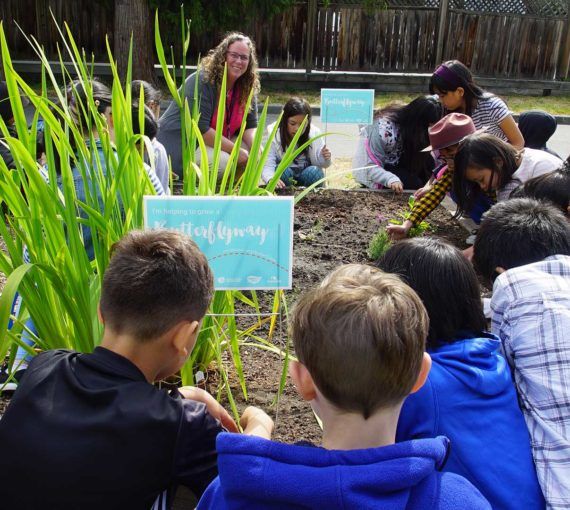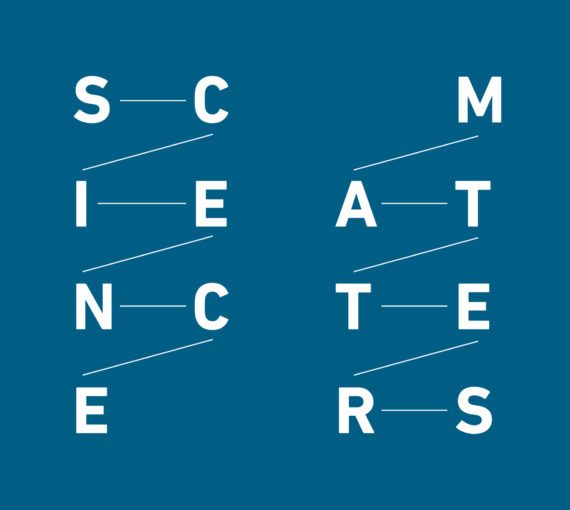
Introducing 16 new reconciliation-inspired Healing Forest projects
While millions of Canadians donned orange shirts and attended Indigenous gatherings and ceremonies to mark the second National Truth and Reconciliation Day, the David Suzuki Foundation was proud to announce support for 16 reconciliation-inspired projects from Sechelt on B.C.’s Sunshine Coast to the We’koqma’q First Nation in central Cape Breton, Nova Scotia.
The projects are part of the National Healing Forests Initiative’s growing network of community spaces dedicated to honouring residential school victims and survivors and their families and communities. The initiative began in 2015 with the simple goal of inspiring residents to come together to establish Healing Forests in their communities.
The beautiful thing about healing forests is that they can be any size and location. On the grounds of a school or church. On private or public land. Wild, rural or urban. What’s important is that they bring people together to learn about this country’s past, spend time in nature, and work towards reconciliation.
Instead of being prescriptive in what constitutes a Healing Forest, they left this up to each community to determine. Healing Forests can range from big, forested landscapes to small healing gardens on the grounds of a church or school. They can be on private lands or in public spaces, like municipal parks and trails. The main caveat is that all Healing Forests must be thoughtfully created in collaboration with local Indigenous groups, nations and Elders.
The National Healing Forests Initiative remains a passion project for its founders, Patricia Stirbys, a Saulteaux Cree from Cowessess First Nation in Saskatchewan, and Peter Croal, a retired geologist from Ottawa, Ontario. They met on a healing walk following the release of the Truth and Reconciliation Report. From a conversation during their walk, the Healing Forests project organically spread to 10 communities by last year.
This summer, the David Suzuki Foundation announced a partnership with the National Healing Forests Initiative. The foundation is providing support to groups proposing Healing Forests, in an effort to continue growing the network. From dozens of applicants, 16 projects were selected to receive support. Each group will now participate in a series of networking workshops that will connect these eager community advocates and bolster their efforts to establish their own Healing Forests.
Every person needs to take up the challenge of reconciliation. That’s why we wanted to grow the healing forests network, to help people begin their journey towards understanding and healing.
The new projects include Healing Forests proposed for three schools, a hospital, community farm, church, municipal parks and wilderness trails, private meadows and woodlots and several First Nations. They’re in Alberta, British Columbia, Manitoba, Nova Scotia, Ontario and Saskatchewan.
The David Suzuki Foundation is grateful for the guidance and inspiration provided by Peter and Patricia and for the unique and thoughtful projects being proposed by the 16 groups (see summaries of each project below). We can’t wait to see how these projects and community connections grow and flourish.
This map includes the 16 new Healing Forest projects supported by the David Suzuki Foundation and National Healing Forests Initiative. Below are summaries of the 16 new Healing Forest projects (in alphabetical order).
Indigenous Community & Healing Garden, Ajax Pickering Hospital, Ajax, Ontario
The Ajax Pickering Hospital has begun creating an Indigenous Community & Healing Garden on its site, including native trees and shrubs, a wildflower meadow and circular raised-bed vegetable garden. The donor-funded garden is run by the Ajax Pickering Hospital Foundation and community volunteers and will provide a tranquil space for patients, visitors and staff to relax and heal. Partners: Ajax Pickering Hospital Foundation, Lakeridge Health, Ajax Mayor’s Gala, Miinikaan Innovation & Design, local Elder, We Grow Foods (non-profit)
Birch Path Healing Forest, Just Food Community Farm, Gloucester, Ontario
Community volunteers will establish a Healing Forest in a stand of birch trees at Just Food Community Farm, in Blackburn Hamlet, just outside Ottawa, Ontario. Partners: Just Food Community Farm, Root in Nature, Forêt Capitale Forest
Central Manitoulin Public School Wellness Orchard, Central Manitoulin Public School, Mindemoya, Ontario
Staff and students at Central Manitoulin Public School in Mindemoya, Ontario, propose to establish a Healing Forest in their schoolyard. The Healing Forest will include a fruit orchard and garden and will provide opportunities for students, including many from the M’Chigeeng First Nation, to connect with nature. Partners: Central Manitoulin Public School, Rainbow District School Board
Cheam First Nation Healing Forest, Rosedale, B.C.
Cheam First Nation will establish a quiet place for solace, reflection and healing beside their longhouse in B.C.’s Fraser Valley. Partners: Cheam First Nation, Sardis Community Church
Eagle Lake Farabout Peninsula Healing Forest, Farabout Peninsula, Northwestern Ontario
Eagle Lake First Nation and the Eagle Lake Farabout Peninsula Coalition have declared Farabout Peninsula a “Healing Forest.” The designated meeting place for the Healing Forest is on the isthmus portage path at the base of Farabout Peninsula, a roadless wilderness area near Dryden in Northwestern Ontario. Partners: Eagle Lake First Nation, Eagle Lake Farabout Peninsula Coalition
Friendship Trail Healing Forest, St. Adolphe, Manitoba
Ritchot is a rural municipality just south of Winnipeg, Manitoba, with a rich Indigenous and Métis culture. Community partners and volunteers who manage the Friendship Trail, a forested recreational trail along the Red River, plan to dedicate the trail as a Healing Forest. Partners: The Friendship Trail (non-profit community group); Manitoba Metis Foundation, Southeast Region — St. Adolphe local; Ritchot Senior Services (non-profit group); Regional Municipality of Ritchot
ila’latl Healing Forest, Skye River Trail, Whycocomagh, Nova Scotia
Members of the We’koqma’q First Nation will add a gathering space for sacred ceremonies along the Skye River Trail, a riverside forest trail in central Cape Breton, Nova Scotia. Partners: We’koqma’q First Nation
īnimin sīpīsis — Blueberry Creek Healing Forest, Leslieville, Alberta
The proposed Healing Forest comprises four hectares of undeveloped meadow and forest in a valley nestled next to an environmental reserve along Blueberry Creek. Located in rural central Alberta, the site was recently purchased and is on private land. With walking trails and a labyrinth in progress, it will provide a natural space for meditation, prayer, reflection and ceremony. Partners: Local Cree Elder, Medicine River Wildlife Centre, Local community members and organizations
Kinoo wiiyaa minoyaa Healing Forest, Manitoulin Secondary School, M’Chigeeng, Ontario
The kinoo wiiya minoyaa (place where everyone becomes well in mind and spirit) Healing Forest is proposed for the schoolyard of Manitoulin Secondary School, which has 40 per cent Indigenous students. Partners: Manitoulin Secondary School, MSS Ecoschool Team, M’Chigeeng First Nation, local companies
Navan Healing Forest, Ottawa, Ontario
An Ottawa-area resident is proposing a Healing Forest be established at a municipal park in Navan, Ontario. It will serve as a space to contemplate, meditate on and educate about the history of residential schools, honour the victims and celebrate survivors. Partners: Navan Community Association, District A4 Lion’s Club, Friends of Mer Blue, Ottawa Catholic School Board (OCSB), City of Ottawa and various community groups.
Silver Tip to Wedzin Bin Trail Project, Unist’ot’en Village + Gidimt’en Checkpoint, B.C.
The Sacred Headwaters Healing Forest is a project led by members of the Gidimt’en and Unist’ot’en, two clans of the Wet’suwet’en Nation in B.C.’s Interior. The clans are collaborating to complete a six-kilometre trail to Wedzin Bin (colonial name Morice Lake). The trail will provide Wet’suwet’en access to the healing properties of these forests and sacred headwaters. Partners: Unist’ot’en Healing Centre; Unist’ot’en Clan; Gidimt’en Clan
st’elmixw salnachiya Healing Forest, Kinnikinnick Park, Sechelt, B.C.
The st’elmixw salnachiya (medicine forest) Healing Forest t is being proposed for a municipal park adjacent to Kinnikinnick Elementary School in Sechelt, on B.C.’s Sunshine Coast. The park’s forested trails are used daily by students, including many from the shíshálh Nation. Staff from the school will work with shíshálh language and culture teachers and Elders to develop a Healing Forest in the park. Partners: Kinnikinnick Elementary School; School District 46; District of Sechelt; shíshálh Nation; Syiyaya Reconciliation Group
Trail of Song Healing Forest, Lumby, B.C.
The Trail of Song is a proposed Healing Forest within the Wildcraft Forest interpretive trail, located in the North Okanagan. In collaboration with local Indigenous and community groups and artists, the Wildcraft Forest Foundation will develop nature-based educational materials for the Trail of Song. Partners: Members of the Okanagan Indian Band, Wildcraft Forest Foundation, Regional District of North Okanagan
ts’ukw’um Healing Forest, Sechelt, B.C.
The proposed ts’ukw’um Healing Forest is on B.C.’s Sunshine Coast, on a seasonal shíshálh Nation village site. A local non-profit group is working with an Elder, whose ancestors lived in the village for hundreds of years, to establish a Healing Forest trail to the village site. Partners: Local Elder, Elphinstone Logging Focus Society (ELF)
Waupoos Healing Forest, Prince Edward County, Ontario
The proposed Waupoos Healing Forest will be located in a private forest within the traditional territory of the Tyendinaga Mohawk (Mohawks of the Bay of Quinte). A local company and local groups are aiming to create a trail and garden with native plants, trees and shrubs. Partners: Marcatus QED, Mohawks of the Bay of Quinte
Westminster United Church Healing Garden, Westminster United Church, Regina, Saskatchewan
The yard of Westminster United Church in Regina, Saskatchewan, will be reimagined as a space for ceremony and reflection. A path and native plants will be added to the space, under the canopy of mature elm trees. Partners: Westminster United Church, local Elder


